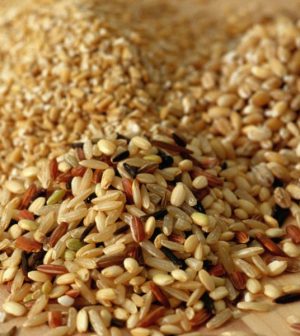- Navigating Your Midlife Crisis: Embracing New Possibilities
- City Raccoons Showing Signs of Domestication
- Mapping the Exposome: Science Broadens Focus to Environmental Disease Triggers
- One Week Less on Social Media Linked to Better Mental Health
- Your Brain Changes in Stages as You Age, Study Finds
- Some Suicide Victims Show No Typical Warning Signs, Study Finds
- ByHeart Formula Faces Lawsuits After Babies Sickened With Botulism
- Switch to Vegan Diet Could Cut Your Greenhouse Gas Emissions in Half
- Regular Bedtime Does Wonders for Blood Pressure
- Dining Alone Could Mean Worse Nutrition for Seniors
Getting in Step With Whole Grains

Research continues to unlock the benefits of eating whole grains, already thought to promote better digestive health, along with being very filling.
A review of 12 studies involving nearly 800,000 participants published in the journal Circulation found that eating three to four servings of whole grains every day can lower the death rate from many illnesses, including heart disease and some cancers, compared to people who eat no or few grains.
When trying to add to the whole grains in your diet, keep in mind that you have choices beyond whole-wheat bread and brown rice.
Many ancient grains are being reintroduced and are available in a variety of products. Like the already super-popular quinoa, amaranth is a grain variation with a high protein content. Because it doesn’t have gluten, it’s a good choice for anyone with celiac disease or a sensitivity.
Bulgur is a wheat product similar in appearance to couscous. You may already know it as a key ingredient in the Middle Eastern dish tabbouleh.
Farro is a type of wheat that’s sometimes used to make semolina flour for pasta. In whole grain form, it looks and cooks like rice.
Spelt is another type of whole wheat grain coming back in favor. Use spelt pasta to replace the refined type in favorite recipes. Because it’s also sold in a refined state, be sure to buy “whole spelt” products.
You can use any of these grains in place of white rice or pasta in your favorite pilaf, macaroni salad or pasta pesto recipe. Make them into a hot meal or a filling salad by adding a variety of chopped vegetables and lean protein.
More information
The American Heart Association has more on whole grains and how to make healthy choices.
Source: HealthDay
Copyright © 2025 HealthDay. All rights reserved.










